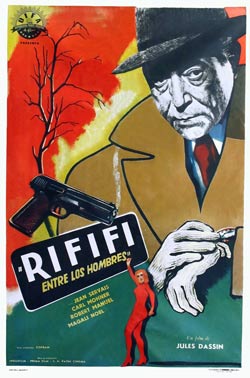 Unlike most classic film noir, heist movies are not about passion but process. If all noir taps into its audience’s guilty desires—to murder or lie or commit adultery—the heist film taps into a particularly cool-burning flame: the desire to be a professional crook.
Unlike most classic film noir, heist movies are not about passion but process. If all noir taps into its audience’s guilty desires—to murder or lie or commit adultery—the heist film taps into a particularly cool-burning flame: the desire to be a professional crook.
This being classic noir we’re talking about, the heist team is always going to go down in flames in the end. These days, heist films like The Town and the Ocean’s franchise showcase their criminals’ and crooks’ stealing without impunity or consequence. Perhaps in a world where unregulated Wall Street malfeasance can bring the word economy to the brink of collapse without anyone going to jail, we’re simply beyond the idea that greed is a sin, much less the root of all evil. In the old days, though, that idea still had merit.
Still, all in all, stealing sure did look like a lot of fun. In his book Crime Fiction, part of The New Critical Idiom Series, scholar John Scaggs identifies three kinds of crime story: the whodunit, the whydunit, and the howdunit. The popular whodunit is your basic puzzle-like murder mystery (think Agatha Christie). The whydunit is more psychological in nature, more focused why people do what they do (think Jim Thompson). The howdunit is about process. This is where the police procedural (think Ed McBain) and its evil twin, the heist story (think Richard Stark aka Donald Westlake), come in. The joy of these stories come from watching professionals go about their work.
In film, the joy of a good heist flick is watching a bunch of smooth criminals go about their business. More often than not, these are working-class crews, just a bunch of guys trying to feed their families, or pay off the bookies, or save up enough dough to get out of town. There’s always one guy who’s got the brains, and one guy who’s got the muscle, and there’s always a weak link who brings the whole perfect plan to ruin. Like I said, this is classic noir. No happy endings here. Save that crap for the kids.
Best of the Best:
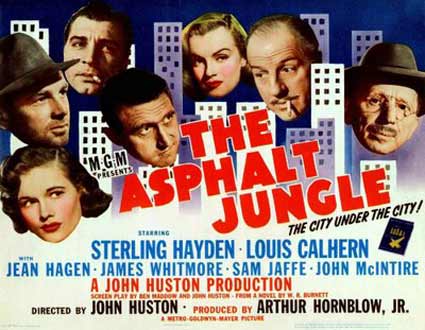
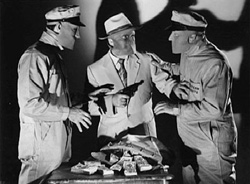
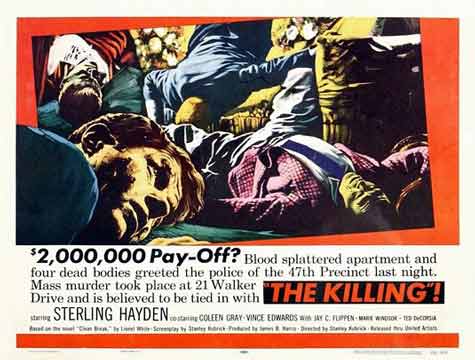 3. The Killing (1956) As the mastermind of a race-track heist, Sterling Hayden gives his other great performance in another great classic noir heist film. Director Stanley Kubrick made more acclaimed films, but I’m not alone among noir geeks in thinking that he never topped this tour-de-force. Working from a script he co-wrote with Jim Thompson (don’t let the “additional dialog” credit fool you, JT was the co-author of the script) from the book by Lionel White, Kubrick brought the heist flick to its purest expression since, well, The Asphalt Jungle. Bonus points for the darkest vision of matrimonial hell to make it to the screen in the 1950s: the brutal union between she-devil Marie Windsor and cuckold Elisha Cook Jr.
3. The Killing (1956) As the mastermind of a race-track heist, Sterling Hayden gives his other great performance in another great classic noir heist film. Director Stanley Kubrick made more acclaimed films, but I’m not alone among noir geeks in thinking that he never topped this tour-de-force. Working from a script he co-wrote with Jim Thompson (don’t let the “additional dialog” credit fool you, JT was the co-author of the script) from the book by Lionel White, Kubrick brought the heist flick to its purest expression since, well, The Asphalt Jungle. Bonus points for the darkest vision of matrimonial hell to make it to the screen in the 1950s: the brutal union between she-devil Marie Windsor and cuckold Elisha Cook Jr.
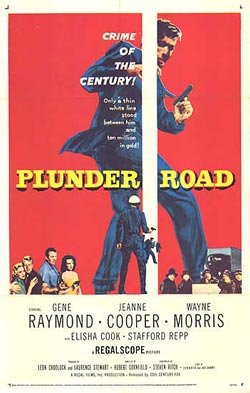 4. Plunder Road (1957) Director Hubert Cornfield’s overlooked train heist flick features the hardest working crew in noir. The film opens with a thrilling ten-minute sequence in the pouring rain, and it doesn’t let up while our gang of robbers attempt to haul their nine-ton gold shipment across state lines. The uniformly excellent, if largely unknown, cast is headed by the indispensible noir character Elisha Cook Jr. (This film would make a good companion piece to Cook’s work in The Killing.) Director Cornfield had deep roots in France with filmmakers like Melville, Godard, and Truffaut, and there is every evidence that with Plunder Road he was setting out to make a film that would appeal to the crowd that loved its existentialism in pulp form. He succeeded. Hard to find, but worth the search.
4. Plunder Road (1957) Director Hubert Cornfield’s overlooked train heist flick features the hardest working crew in noir. The film opens with a thrilling ten-minute sequence in the pouring rain, and it doesn’t let up while our gang of robbers attempt to haul their nine-ton gold shipment across state lines. The uniformly excellent, if largely unknown, cast is headed by the indispensible noir character Elisha Cook Jr. (This film would make a good companion piece to Cook’s work in The Killing.) Director Cornfield had deep roots in France with filmmakers like Melville, Godard, and Truffaut, and there is every evidence that with Plunder Road he was setting out to make a film that would appeal to the crowd that loved its existentialism in pulp form. He succeeded. Hard to find, but worth the search.
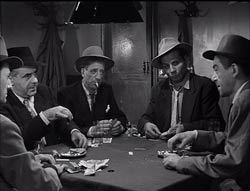
Later, Tarantino deconstructed the heist genre with 1992’s Reservoir Dogs by filming a heist movie without a heist. And for my money, Michael Mann made the last great heist movie with 1995’s Heat, possibly the most epic ‘howdunit’ on record and a film steeped in the classics of the genre.
Images via Film Noir Photos, Wonders in the Dark and IMP Awards.
Jake Hinkson, The Night Editor

I’ve never seen Plunder Road. I do like EC Jnr. Smashing post.
Great as usual Jake. Hard to argue any of these. I agree Plunder Road is a great one.
The heist film is one that will never go away. It is pure fantasy role playing for the audience. The most “nice guy” of all crimes.
Hell, after thinking about it, what do you say Jake? Let’s knock over a payroll delivery! We can learn all the mistakes from these films. It’s a cinch!
Great post, Jake, and many thanks for including Plunder Road, a classic heist/noir tale with a terrific cast. I’ve seen it on TV once and I own the VHS. When I got rid of my VHS’s, I only kept two: that one and Try And Get Me.
Any ideas as to why Plunder Road is never–I mean never–on TV?
Thanks for the kind words, fellas.
Beetner: your misplaced faith in our abilities to pull off a hesit is the perfect beginning for a classic heist flick. Let’s do this thing. East Coast/West Coast unite!
Mike: Try and Get Me (aka The Sound of Fury) is just about a perfect movie, don’t you think? As for Plunder Road, who knows? I guess whoever owns it doesn’t know what they have. Interestingly, I just found out that it is available for streaming on Netflix of all places. Crazy. Weirdly, a suprising amount of the back catalog of classic noir is available for streaming on Netflix.
I think Bob le Flambeur gets an honorable mention too, Jake.